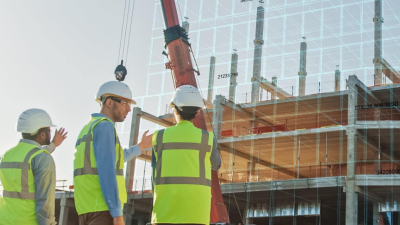
New technologies to improve health and safety performance
Discovering Safety joins forces with Safetytech Accelerator to build a Smarter Regulation Sandbox.
This page is approximately a 4 minute read
This page was published on
Lloyd’s Register Foundation has previously published a foresight review in the area of structural integrity and systems performance. A key observation is that additive manufacturing of metals and other materials has the potential to enter widespread industrial use, but it is important that its application must not reduce safety or reliability.
In this context, the Foundation has created a roadmap to indicate the work that it believes is needed to assure safe application of additive manufacturing and also identifies the unique activities where the Foundation could make a distinctive difference.
The Foundation has no commercial interest in the development or commercialisation of the technology, such as developing a better 3D printer that is faster or cheaper. In line with our charitable purpose, the starting point for our roadmap is the ultimate aim: the safe adoption of additive manufacturing to safety-critical assets.
With this aim in mind, we reviewed existing roadmaps and consulted experts in the field to identify the key challenges that will lead to safe adoption of the technology:
Confidence in the supply chain
Localised manufacture from digital designs creates a number of commercial opportunities but also increases safety risks. What is most important is that critical components are made well, that correct components are installed and that any repairs carried out do not result in unexpected failure.
The goal here is to work towards: creating standardised ways of assuring that components are well made; ensuring that there are improved ways of avoiding counterfeit or rejected parts from entering service; that repairs can be relied upon; and that confidence in the supply chain is not damaged by the disruptive business opportunities that additive manufacturing will bring.
A competent and qualified workforce
Irrespective of the level of confidence in the ability of an additive manufacturing machine to be able to build a part, the function of the part will depend on the skill of the designer, and the quality of the part will depend upon the individual(s) responsible for the manufacture of the part. For a new technology such as additive manufacturing there is a need to have designers that are able to design safe and functional parts and machine operators that understand how to make the parts and know when and why problems have arisen.
The goal here is to work towards developing engineers with a fundamental level of knowledge about the process and operators who are competent enough to assure high quality parts are consistently produced.
Safety enhancements (enabled by additive manufacturing / 3D printing)
The previous challenges have focused on assuring that parts are well designed and made to be at least equivalent to current technologies. This challenge looks to how additive manufacturing can lead to improvements in reliability and safety over and above what is possible today. Opportunities exist for additive manufactured parts to be used to make systems that have fewer potential failure points and which are smarter, for example creating data about the environment they work within or providing crucial information about the parts themselves. There are also opportunities for improvement that we are only just beginning to understand.
This review looks at these challenges, both to control risks and exploit opportunities, in more detail. The purpose is to encourage others to work in these areas and for the Foundation to work with partners that can make a distinctive difference to making the world a safer place …because Life Matters.
If you wish to use and reference the Roadmap for Additive Manufacturing, please include the following DOI: https://doi.org/10.60743/nm11-ns90.
Example Citation in Harvard Style:
Lloyd's Register Foundation (2016) Roadmap for Additive Manufacturing. Lloyd's Register Foundation. doi: 10.60743/NM11-NS90.
This roadmap examines the challenges of technology qualification, supply chain confidence, workforce competence and safety enhancements in additive manufacturing. (PDF, 8.96MB)
